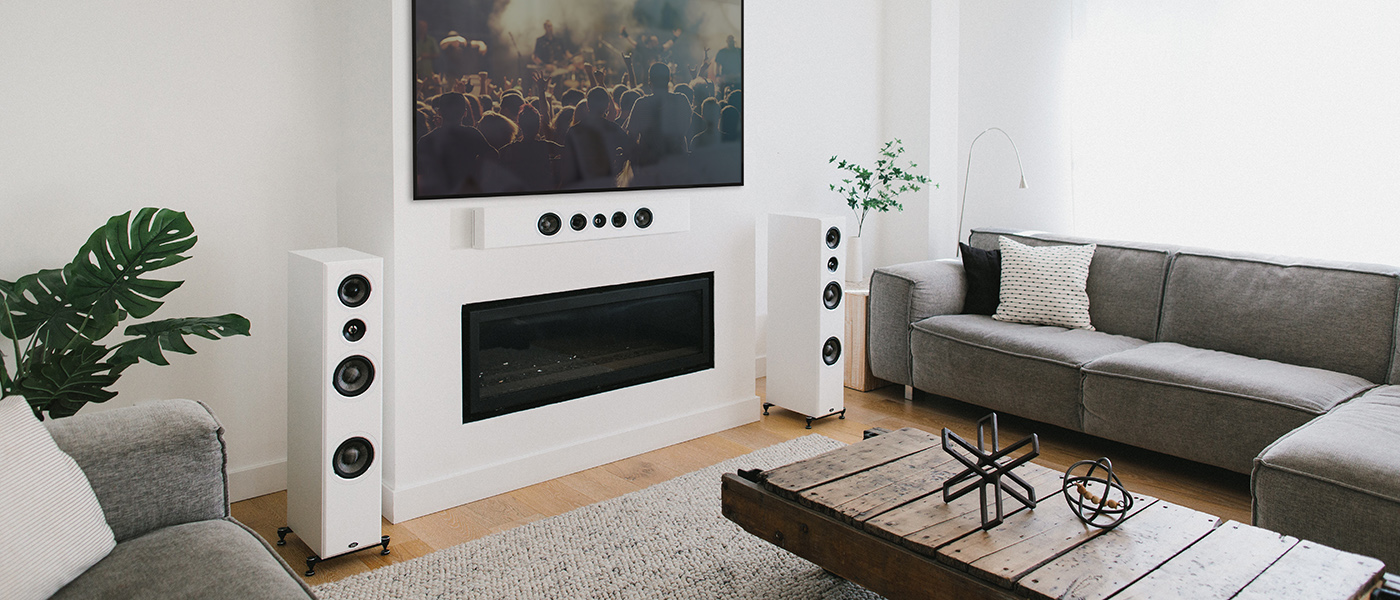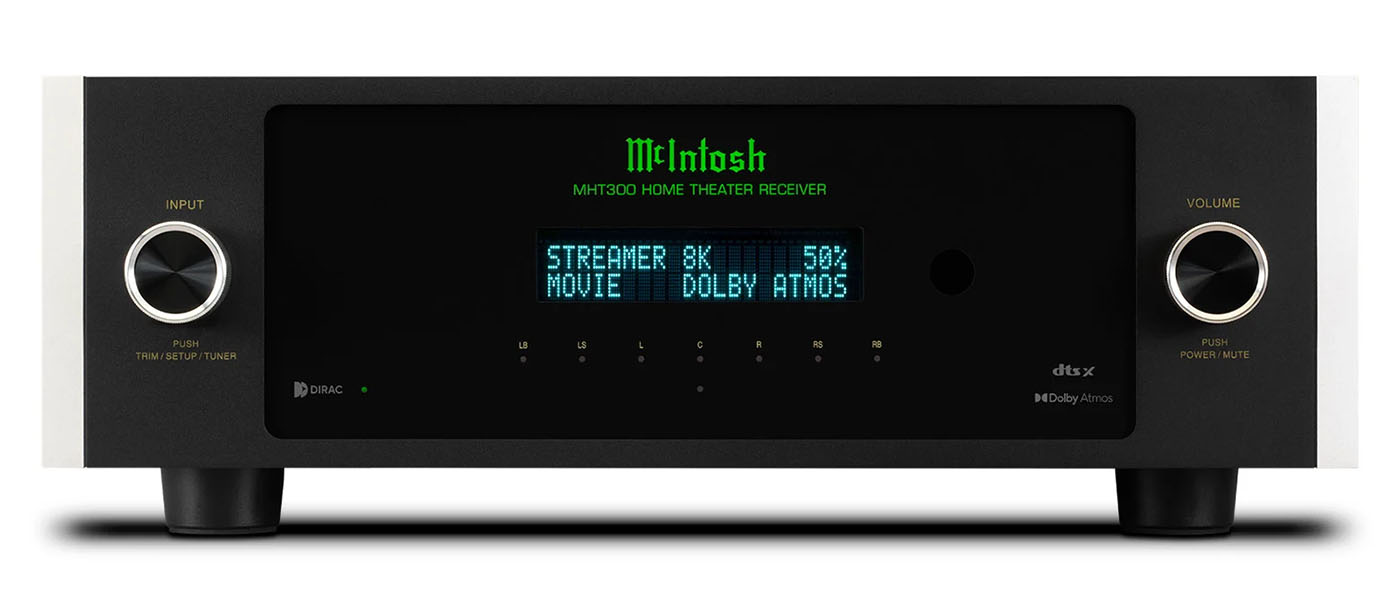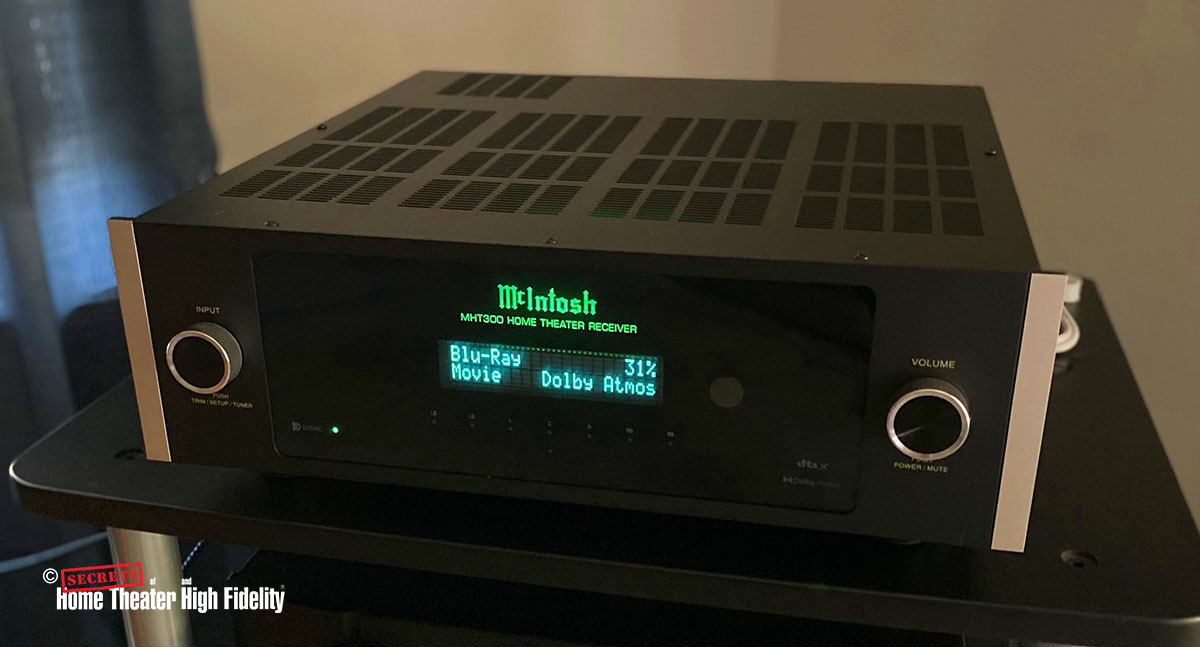McIntosh has been in the AV business for nearly 75 years. Their amplifiers were at Woodstock. Their distinctive blue, green, and glass faces have been adorning audio shows for, well, as long as there have been audio shows. But in all those years they have only made two other A/V receivers. They don’t design and produce products willy-nilly every year and their products are not for the “common man”. For many of us, it takes years to claw our way up to the top of the audiophilia mountain…and when we get there, McIntosh!
McIntosh MHT300 Home Theater Receiver Highlights
- 7.2 channel AV Receiver (expandable to 7.2.4).
- 150 Watts per channel into 4 Ohms, 120 Watts per channel into 8 Ohms (ALL 7 channels driven).
- 4 HDMI inputs & 1 HDMI eARC/ARC output: 8K/60Hz & 4K/120Hz; HDCP 2.3; 40Gbps; Rec.2020; 4:4:4 Color.
- Dolby Atmos and DTS:X support.
- Dirac Live Room Correction.
- Dolby Vision, HDR10+ and HLG support.
Known for years as the pre-eminent maker of powerful tube amplifiers, McIntosh has branched out into a full line of audio products from surround processors, speakers, and disc players to a line of audio products found in the higher-end Jeep vehicles. The MHT300 Home Theater Receiver is not inexpensive, but when compared to the cost of McIntosh surround separates (in this case, seven channels worth) you get a pretty good bang for the buck. What got me excited about the MHT300 was its simplicity. A pre-pro with seven very powerful amps that can expand into four overhead Atmos channels, dual subwoofer outputs, and built to become something you can pass down to your grandkids, all in one box. The setup process was easy and sound quality was exceptional for both movies and music. I could get rid of my multiple amps, reduce cable clutter behind my equipment rack, and enjoy the prestige of owning a McIntosh product. I am looking for that elusive less is more type of product and the MHT300 just might be what I’m looking for.
Power Output per Channel:
150 Watts into 4 Ohms with ALL Channels Driven, 120 Watts into 8 Ohms with ALL Channels Driven
Number of Channels:
7.2 (expandable to 7.2.4)
Total Harmonic Distortion:
.05%
Control:
RS232, Web IP, IR Input, 2x 12v trigger
Multi-Channel Outputs Unbalanced:
11.2
Digital Inputs:
2x coaxial, 2x optical
HDMI:
4x input, 1x output (ARC, eARC)
USB:
1x Type A
Subwoofer Output:
2x discrete
Network Connection:
1
Max # of audio channels in Zone A:
11.2
Ethernet Web interface and firmware update:
IP-based control of HDMI Features
Resolution and Refresh Rates:
8K/60Hz and 4K/120Hz
HDCP:
2.2, 4:4:4, Rec.2020, 3D passthrough
High Dynamic Range (HDR):
Dolby Vision, HDR10+ and HLG
Dolby Processing:
Dolby Atmos, Dolby Surround Upmixer
DTS Processing:
DTS Processing: DTS-X, Neural:X Surround Upmixer
Room Correction:
Dirac Live
Dimensions (W x H x D):
17.5” x 6 3/16” x 20”
Unit Weight:
27 lbs.
MSRP:
$8,000
Website:
Company:
SECRETS Tags:
mcintosh, mht300, av receiver, home theater receiver, surround sound
If not for the FM connection on the back, the MHT300 could almost be classified as an integrated amp. Though the MHT300 is built to last and has ample power, it does come with some caveats, which I will dive into later. When unboxing the MHT300, I was aware of how light the unit was. With seven Hypex Class D modules, the weight is greatly reduced. On the back end, you notice four HDMI inputs that are capable of up to 8K/60 and one HDMI eARC output. Do not expect to play the latest games on this unit (not that the MHT300 is intended to appeal to gamers). There are two coaxial and two optical inputs. No analog inputs are present unless you want to purchase an analog-to-digital converter. There is the FM antenna input (I think that’s a McIntosh first) and two trigger-outs for powering on other devices. The network jack may be used to set up the MHT300 and is not used to connect to the internet. Alternatively, the front panel VFD may also be used for setup. The binding posts are gold plated and a wrench is provided to tighten them onto speaker wire. Each speaker out has a jumper above it should you want to use another processor or amp other than the MHT300. This means it can function as a processor or multi-channel power amplifier. Four height channel outputs are also included which require outboard amplifiers should the seven internal amps all be in use. Or you could connect them to the jumpers and feed them into MHT300 if you have a 5.X setup. The front panel is mostly glass framed with aluminum. The knob on the left is a source input selector and for menu setup, though that process is better done with the computer with the MHT300 connected to the same network. The knob on the right is OFF/ON and volume control.
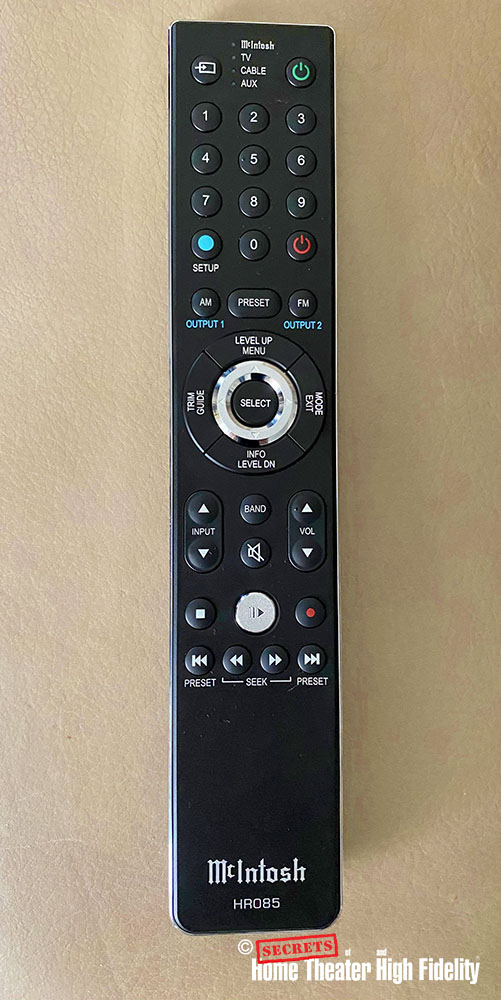
Secrets Sponsor

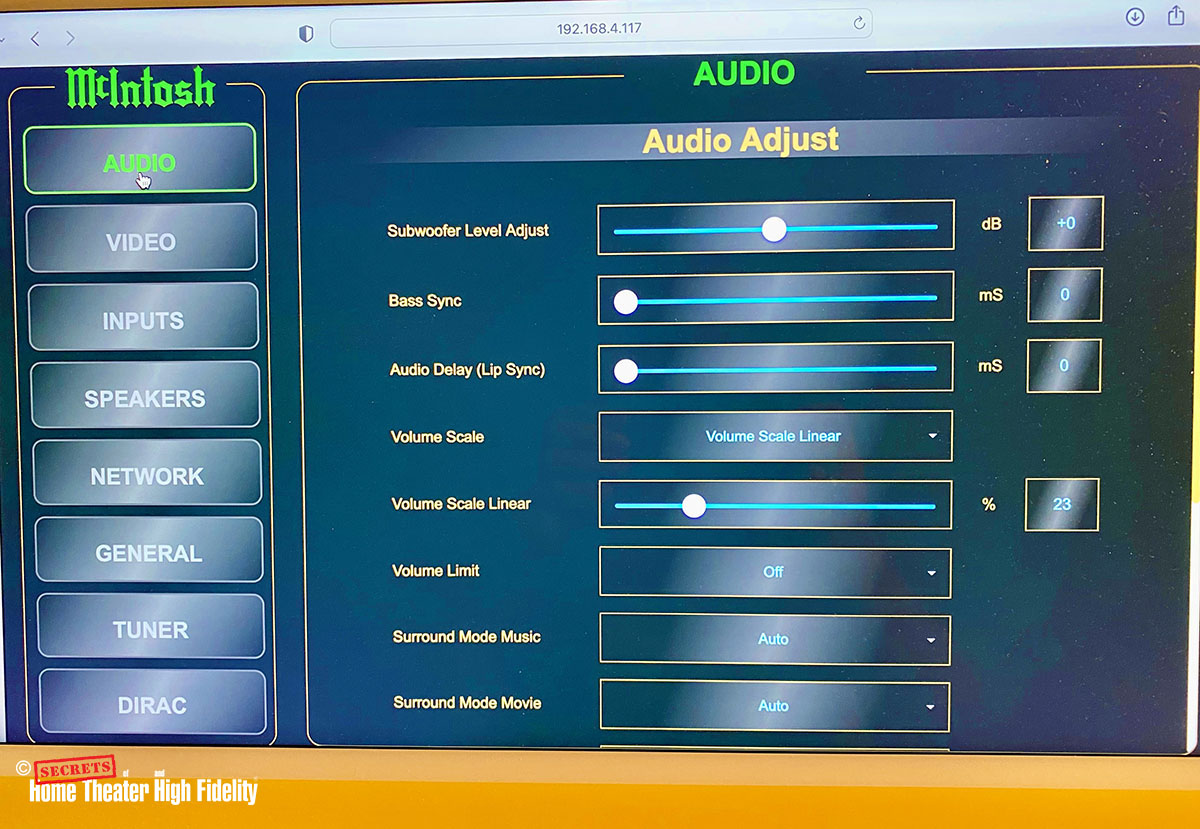
Secrets Sponsor
Over time, certain missing features became apparent. Mind you, these are just my opinions, you may not care about these things, but here we go: First, no internet radio. No analog inputs. The need to purchase another amp or two for the overhead speakers. No voice assistant (Siri, Alexa, etc.), no backlit remote, no ability to decode DSD unless converted first to PCM, no on-screen display for setup on the fly, and the info display is a bit too minimalistic. No Imax Enhanced. Nothing for gamers. No Bluetooth or Wi-Fi. No balanced inputs. All of this may seem to be too much compromise for an $8,000 receiver, but it may not be aimed at my personal tastes.
Compared to other AV receivers, the MHT300 looks a bit plain. If, however, you are a fan of McIntosh products, it can be considered a value product because their other processors combined with even their most modest amplifiers would easily exceed the cost of a MHT300. If I already had a rack of McIntosh gear, I wouldn’t blink at this product. It is all in how you view value. It does the basics well with tons of power and it is a McIntosh.
With movies, the MHT300 performed flawlessly and switched to Dolby Atmos without a hitch. The dialog was always very articulate with excellent mid-bass clarity. That extra sizzle and zing of bullets lacked a bit of air and tended to sound attenuated. I like to flinch when a bullet whizzes by my head. I wasn’t quite getting that. Bass was very powerful, and I never felt the MHT300 was working hard. The unit generated some heat over extended use, but not like other receivers I have owned in the past.
Movie

Lately, my “go-to” scene for home theater testing is the shotgun scene from John Wick 3: Parabellum. The detail of shoving shells into the gun, the gut-punching sound of them going off, the tinkling of shattered glass, and the ejected shells hitting the marble floor are amazing. And all this chaos is in all seven channels at the same time, yet the MHT300 delivered the sound in a way that engaged you. Never did it sound like it was running out of juice and the impact of the bass was wonderful. I could play this 10-minute clip over and over and never tire of listening to it.
Music

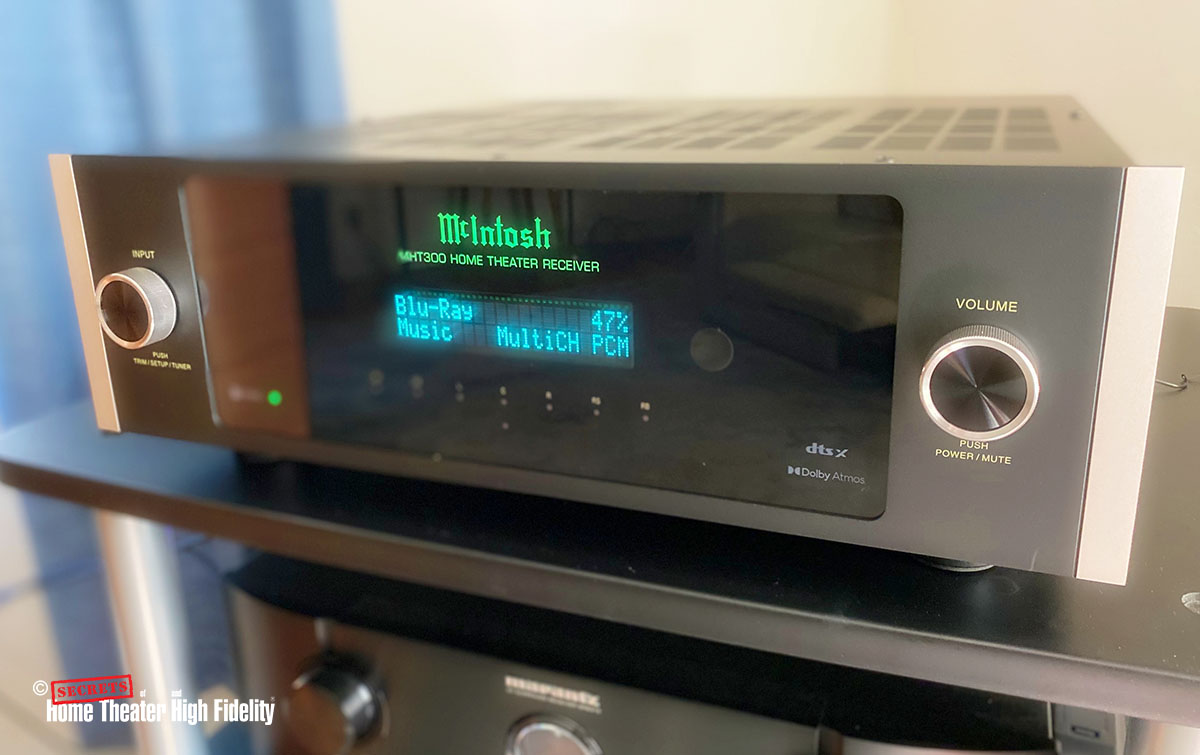
The McIntosh MHT300 Home Theater Receiver is a sonic powerhouse. Built to last and priced accordingly, you must decide if it’s right for you.
- Lots of clean power with all channels driven.
- Easy functionality.
- McIntosh build quality and likely longevity.
- Dirac room correction (mic and stand included).
- Backlit remote.
- A few analog inputs.
- Display more info on the screen.
There are a lot of choices out there in the receiver marketplace. However, few can boast the rich heritage of McIntosh. The MHT300 Home Theater Receiver may not be all things to all people, but it delivers solid build quality and dynamic sound output. Considering it is a McIntosh processor, has seven powerful channels of output, and is built like a tank, you may find that less is more.


